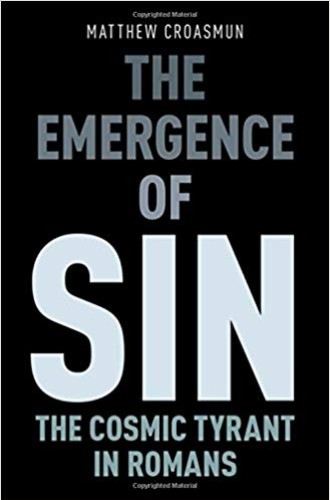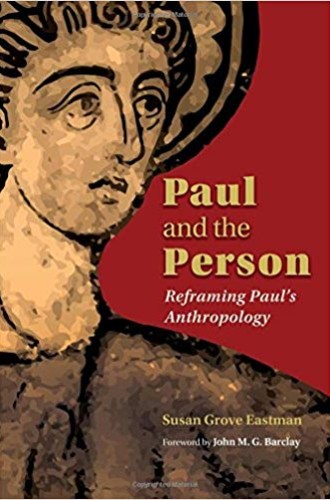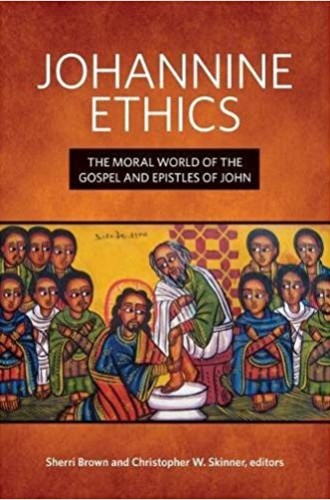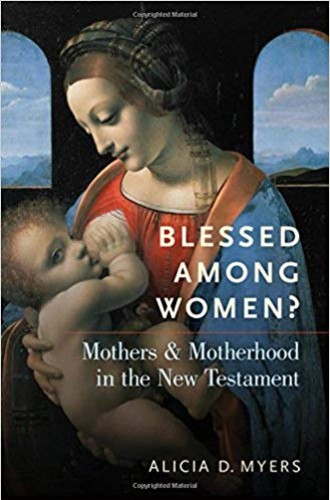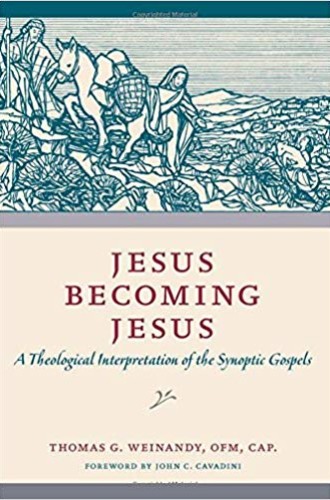Take & read: New books in New Testament
Can we read scripture critically and theologically at the same time?
Modern biblical interpretation has been dominated by historical-critical methods and has been wary of allowing contemporary questions of meaning to influence the interpretive task. But some of the best new books in the field attempt to use the tools of historical analysis in conjunction with other disciplines, such as science, philosophies of personhood, theology, gender studies, and Christian ethics.
In The Emergence of Sin: The Cosmic Tyrant in Romans (Oxford University Press), Matthew Croasmun reflects upon how Paul’s language of sin shifts in Romans 5–8 from “sins” to something cosmic and active, something that seems to have its own agency. In these chapters, Sin (which Croasmun renders as a proper noun) enslaves, imprisons, deceives, kills, and exercises dominion over its subjects. Is Paul simply speaking hyperbolically when he personifies sin? Many regard Paul’s language of cosmic powers acting upon individuals as contradicting our modern view of humans as individuals who have their own agency and are responsible for their own actions. Or does Paul think of Sin as an actual person, capable of acting upon other persons?
Read our latest issue or browse back issues.
Croasmun believes Romans 5–8 portrays Sin as an emergent power: a “superorganism with a group mind emergent from a complex network of individual human persons.” In other words, Sin emerges out of sinning individuals and institutions, at which point it can exert further influence back upon these individuals and institutions. Sin in Paul functions in a multilevel manner that relates the individual, the cosmic, and the social. Croasmun’s multilevel analysis of sin—as personal, mythological, and structural—has further implications for how interpreters understand Paul’s language of “the body of Christ” (Rom. 12:1–8) and “the mind of Christ” (1 Cor. 2:16).
Susan Grove Eastman shares with Croasmun a concern that when biblical scholars resist conversation with science, philosophy, sociology, and other disciplines, they fail to grasp the meaning of Paul’s anthropology. In Paul and the Person: Reframing Paul’s Anthropology (Eerdmans), Eastman constructs a three-way conversation between the Stoic philosopher Epictetus, Paul and his language about the body and the person, and recent philosophies of neuroscience, the mind, and personhood.
Epictetus argues against making oneself dependent upon other persons and social factors. Since knowledge of oneself is not related to knowledge of other individuals, there is no real potential for a relationally constituted self. In contrast, philosophies of science and the mind consistently portray the self as irreducibly embodied and intensely intersubjective. Humans are not isolated individuals; we are constituted by our social and environmental location. Eastman refers to this relational nature of human identity as the “second-person perspective.”
Such a perspective, she argues, helps make sense of Paul’s language of sin as a power that acts on humans (Rom. 7), his participatory language about another agent—Christ—who lives and acts in his people (Gal. 2), and his account of the preexistent Christ imitating and assimilating himself to humanity (Phil. 2). Eastman emphasizes that Paul’s portrait of the person is not that of an isolated, autonomous individual. Paul’s language about human bodies is almost always qualified by their relationship to other life-giving or death-dealing realities (whether Christ, sin, the flesh, or death). In Paul’s vision, we are embodied creatures embedded within social and physical environments who need radically new relationships and systems that can only be created through Christ’s entrance into the human condition. In the incarnation, Christ assimilates to our human condition and breaks the power of sin and the flesh, thereby reconstituting humanity and placing us in a new relational network with Christ, the Spirit, and all of God’s people.
The essays in Johannine Ethics: The Moral World of the Gospel and Epistles of John (Fortress), edited by Sherri Brown and Christopher W. Skinner, argue that the contributions of John’s Gospel and the Johannine epistles to contemporary and New Testament ethics have been unfairly neglected or rejected. Brown and Skinner suggest that this neglect generally comes from either a wrong-headed assumption that there are no ethics in the Johannine literature or a rejection of John’s moral vision as sectarian and even morally problematic. Most of the authors contest both of these claims and suggest that the Johannine literature offers important resources for moral and ethical reflection.
For example, Alan Culpepper and Dorothy Lee claim that John’s creation ethic affirms a high view of the sanctity of human life and all of creation—a view that is needed in the face of current ecological challenges. Michael Gorman notes that the common view of John’s Gospel as advocating love only for insiders fails to recognize the implications of God’s act of sending the Son into a hostile world to love it and save it. Because the disciples’ mission is rooted in the mission of the Father and the Son, Jesus’ command to “love one another” includes love for the world and even one’s enemies. Alicia Myers takes up the troubling Johannine portrait of “the Jews” in light of ancient rhetorical practices of characterization. She argues that the characterization of the Jews contains deliberate ambiguity that casts them as struggling to make sense of God’s revelation in Jesus. This ambiguity draws contemporary readers into honest empathy with the biblical Jews in their struggle.
Myers has also published a fascinating book, Blessed among Women? Mothers and Motherhood in the New Testament (Oxford University Press), which situates the New Testament’s maternal characters, metaphors, and motifs within ancient understandings of female bodies. In the ancient world, mothers are often celebrated but also seen as potentially problematic. Myers notes that ancient dominant medical constructions of the female body consistently portray women as in need of masculine stability, self-control, orderliness, and governance. In this context, women are often reduced to their ability to curb their excesses and give birth to (male) children.
Myers shows how the New Testament authors both engage these constructions of women and subvert them. For example, she notes that the Gospels often downplay an emphasis on biological motherhood as the telos of female existence; instead, women find their primary purpose in joining God’s household through obedience and faith. Thus, a woman’s worth is not determined by her capacity to produce male children. In Luke 11:27–28, Mary is simultaneously celebrated as the mother of the Lord and as one whose primary meaning is found in her obedience to the word of Jesus (cf. Mark 3:31–35). Several New Testament authors use breast milk as a metaphor for growth and nourishment, and in so doing they reassign this maternal role to early Christian teachers. Myers shows how the New Testament’s depiction of mothers and motherhood is deeply connected to early Christian constructions of salvation and the church, as well as the experiences of actual women in the early church community.
The most explicitly theological book on my list is written by a theologian who is primarily interested in Christian doctrines, Thomas G. Weinandy. Jesus Becoming Jesus: A Theological Interpretation of the Synoptic Gospels (Catholic University of America Press) examines the most important events in the life of Jesus: his conception, birth, baptism, temptation, transfiguration, death, and resurrection. The title expresses the author’s conviction that the major events of the synoptic Gospels portray Jesus enacting his very identity as expressed in the meaning of his name, “YHWH-saves.”
Jesus’ acts, Weinandy argues, are simultaneously the acts of the human Jesus and those of the triune God. Humanity’s salvation does not consist in the acquisition of information and knowledge; rather, it consists in Jesus’ acts, accomplished by the divine Son of God. These acts are performed in the humanity of Jesus so that humans can participate in the very life of God. While not all readers will share the author’s convictions that the synoptic Gospels are best read together and should be illuminated by Catholic systematic theology, Weinandy’s study is a powerful articulation of the relationship between the biblical texts (as authored by God) and Christian theology.


